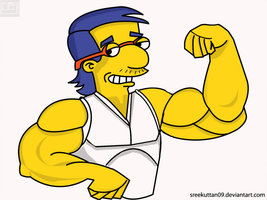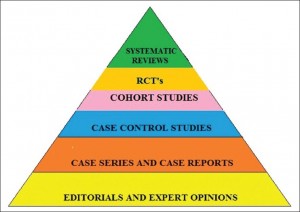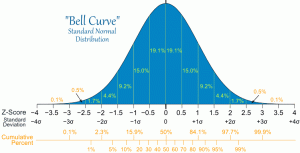How to Science Your Fitness
“Science” is a term being thrown around a lot these days, so much so that it’s actually turned into a verb instead of a noun.
That’s some strong sciencing there!!
I love hearing someone science the hell out of that.
Maybe you just need to get your science on.
It’s kind of a tongue in cheek way of discussing research, physiology and anything else that related. Hell, the tagline on my own site is “It’s not just science, it’s #science,” paying homage to the fact that in the social media world it’s so prevalent that it even gets it’s own hashtag.
Most of what we know about how and why things work the way they do is due to the scientific method. This requires empirical and measurable data to be collected from interventions or experiments in order to determine outcomes. Another way to say it is “If I do this, that happens.” For example, if I do biceps curls in the gym during January, everyone automatically becomes pregnant for their gainz.
Using the above example of impregnating everyone with my biceps curls, lets break down how the scientific method could be used.
- Formation of a hypothesis – this is a question you have about a specific outcome. In the above example, “What would happen if I did biceps curls in the gym? Would I make kids start shooting out of everywhere possible from my awesomeness?” The outcomes would be considered logical conclusions. Another example would be doing biceps curls would make my arms bigger, not necessarily impact the size of my legs. The hypothesis is usually based on a conjecture of known information about a topic so as to somewhat predict what the outcome could be versus just doing random shit for the fun of doing random stuff. Knowing the principle of specificity where in the trained area sees the benefit would mean my arms got the love and not my legs. Knowing how I met my wife after wearing a tight t-shirt on squat day would somewhat refute the original hypothesis, but create another very meaningful question I’ll keep to myself.
- The Hypothesis must be falsifiable – there must be sufficient ways that the proposed conclusion would be proven to not occur. For instance, maybe my curls don’t bring all the girls. It’s unlikely, but in a parallel universe anything is possible.
- Experiment – developing a test to determine whether the outcome you hypothesized would occur. In this instance, I could find out how many of the people are not pregnant prior to my blasting my guns, and then check to see whether more are knocked up right after me dropping the hammer on some sweet sweet peaks. There could be a lot of different types of experiments, but many involve an experiment group and a control group that sees no intervention in order to see if there’s any changes that are simply related to the passage of time. Some would also involve placebo interventions, like having Milhouse from the Simpsons do curls instead of yours truly. Does this turn anyone on? Maybe, maybe not. If so, they’re cranked up form anyone doing curls, and not just me, which would negate the hypothesis.
 Data Collection – determining the effect of the experiment and whether it was significant enough to be considered an outcome of the experiment versus an occasion of chance. This can take some serious mathematical skills so it’s something that needs some specific training or skills to organize, plus involves lots of formulae and greek letters.
Data Collection – determining the effect of the experiment and whether it was significant enough to be considered an outcome of the experiment versus an occasion of chance. This can take some serious mathematical skills so it’s something that needs some specific training or skills to organize, plus involves lots of formulae and greek letters.- Repeatability – this is a very important one as it lends to the broad reach of a certain question versus it being a one-off event. This involves the same methods being applied with a different group of individuals and potentially in a different setting or lab or administrator running the study. For instance, let’s say someone writes a report on a specific type of food that helps cure a certain type of cancer in their studies. Other labs in other parts of the world run the same methods and find that it didn’t alter cancer rates. 2 other labs run the same methods and show the food didn’t cause any changes. Could it be possible that the food does cause a reduction in cancer if one study shows it to happen, but 3 other don’t? Probably not, and it could have come down to chance, ethics of the researchers (cooked books isn’t something that happens a lot, but it has happened in the cut-throat world of academia), or statistical issues.
- Extrapolation – this one becomes pretty important when looking at whether something is universal versus strictly adhering to a certain population or aspect. For instance, let’s say we look at ACL injury rates in females with jumping. A study shows that when their knees cave in towards each other on landing, it increases the risk of ACL ruptures during game play. Multiple studies are done and it’s confirmed every time that when those knees are a knocking, the ACL is a ripping. Someone says cool, let’s see if that also happens with men, and runs the same study, but shows nothing close to the same rate of ACL injuries with knee valgus movement. The study is run again with a different set of men and the same result comes out: no increased ACL risk. This just means there’s a gender-specific response in women versus men to different movement patterns, knees caving in towards each other and a risk of ACL injuries that wouldn’t be the same with men.
The main benefit of the scientific method is it’s used to build on pre-existing knowledge and expand it based on new questions and experimental outcomes. We don’t need to reinvent the wheel each time we start an experiment, and occasionally a study is designed in a way that disproves a known fact. When that study is repeated and the results are consistent, that new outcomes becomes the known fact. New studies reference older ones and find different ways of answering deeper questions to gain further understanding. The old studies aren’t wrong, as the data is the data, but in many cases advances in technology can help get a better understanding on a concept.
Once a body of research is developed on a field and in a specific subject, someone might run a metanalysis, which is where they go through the results from all of the studies in that subject and run a statistical analysis on it to see whether the studies all agree with each other or whether the outcomes are still too far apart from each other to agree. This large scale view of research is always going to be more of a powerful tool in determining causes than simply listening to one of your buddies run their mouth about what exercise is best for building your pecs, or whether 4 seconds up and 2 seconds down is better than just jamming your max weight like no one’s business.
An experts opinion still has value, as they have a specific reference to the research done and had experience with hopefully hundreds or thousands of exposures to certain aspects of their expertise. For example, a trainer with 20 years experience has a certain understanding of what does what. That said, they don’t bring the same validity as someone running a randomized control trial and running post hoc statistical analysis to validate a hypothesis.
A lot of people will point to someone who is huge and jacked and say what he is doing must work. There’s a grain of truth to that, because results do speak loudly. The downside comes in when we try to get 100 people to try to do what Johnny McJacktitude does and get similar results. Maybe 5 people would get wicked awesome results following that guys workout program, another 50 would get average results or injured, and then another 45 would wind up graduating from Failure Elementary with their lunchbox still intact and get absolutely no where. That’s known as normal distribution, where most people are average, some people are exceptional and others are eating the grapes of shame.
So that was a long-winded explanation of the basis of what science is and what it can do. Now the key is to figure out how you can use this to your advantage when you’re in the gym.
I try to use a test-and-measure method with a lot of my clients to see what an outcome is and to determine if it’s the right pathway to walk when it comes to helping someone achieve their goals. Everyone is different, and what may work like gangbusters for someone might cause a lot of problems with another person, so testing is pretty much what I do to differentiate the individual aspects of a training program.
For instance, let’s say someone complains of tight hips and I have them squat. The squat looks more like a rusty hinge than a strong athletic movement, so I say something like “okay, we have some work to do.” From there I would have them try out a couple of different things like corrective exercises, stretches, or maybe foam roll certain areas, and then retest their squat after to see if there was any change from the intervention. Sometimes it’s like a light switch being flicked and it’s a massive and immediate difference, and sometimes it shows a regression. All of this information is important and usable. Here’s an example of this approach in action from Craig Preisendorf, an attendee at one of the workshops Tony Gentilcore and I put on down in Los Angeles recently. Don’t mind the fact that he confuses external with internal rotation though 😉
By testing a hypothesis and measuring the outcome, you can have a better chance of knowing what will work for you and your goals. If you do something that doesn’t get you closer to your goals, and you’re not measuring to find out whether there is any progress being made, you’ll be spinning your wheels for a long time.
For instance, the other day I was in the gym doing squats. I usually set up with a bit of a wider than shoulder width stance, but I thought I would play with it a little. I brought my feet slightly closer and worked with more externally rotated knees. The movement felt smoother and the load I was using was considerably easier. I wanted some more data, so I grabbed my PUSH Strength monitor, which has proven to be an awesome little toy, and measured my power output in multiple stance widths and toe positions with the same loading.
I found a stance that produced significantly more power than then others, then went to work with it and wound up using 50 pounds more on my working sets for 2 more reps per set than I previously had done in about 6 years, which was pretty awesome. Better yet, my hips and knees weren’t sore during or after.
I very well could have just gone by feel and went with the stance that seemed to feel best and lift the weight the easiest, and that would be completely okay. I have the technology to test it out, so I used it, and I found the empirical data I was after.
You can do something similar, but it requires a little work on your end. First, keep a training journal. If you can’t see what you’ve done and what has worked or didn’t work, you’ll have no idea whether what you’re doing is working for you or not. When you’ve recorded your workouts, look back and see what’s happened that could have caused some of your bad performances, and also what could have caused some of your good performances. Put your bench press at the end of your chest day? That’s a bad performance. Worked on sprints the day after an all night party and still hung over? That’s a bad performance.
From there, try to replicate the scenario that lead to the good performances. Did you do something specific in your warm ups, or drink more water that morning, sleep in, stand a different way, or think about bracing in a different manner? Try to replicate it and see if the results are similar or better. If so, keep working on that. If not, something else may have caused the good performance, or it may have been a chance occurrence. The sun shines on the lowliest of lifters even once in a while.
When we look at science, especially in how it’s used in improving your health and fitness, it’s the outcome of a specific test in a specific scenario on a specific population that helps form our understanding of the world around us. We can choose to believe in the outcomes based on our experiences or not, but the results don’t require you to believe in them. If the results of a specific test conflict with your own dogma (we all have them, so don’t think they’re a bad thing), it may present with some internal dilemma or challenge to your understanding of how or why something works, but that doesn’t mean it’s bad. It’s just an outcome. Everyone is an n=1 study on the effects of everything, so use the results that others have managed to get and build off them. Try to play with it and see if it works for you. That’s how progress is made.





2 Responses to How to Science Your Fitness